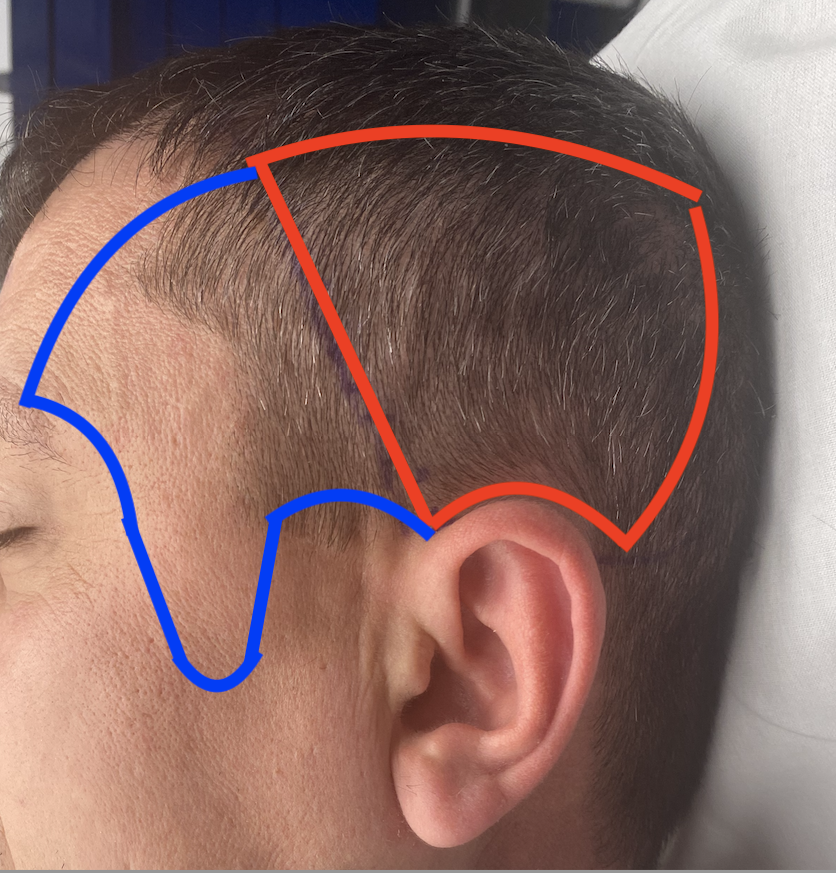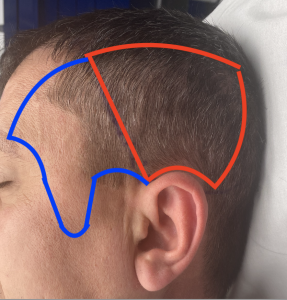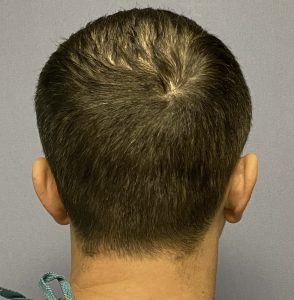Background: The temporal bone is the major skull bone on the side of the head whose main functions are to protect the temporal lobe of the brain and encase the bony ear canal. It has two components, a deeper concave fossa by the side of the eye where most of the temporal muscle resides and a convex posterior portion that involves the ear canal and the bone above it. While most of the temporal muscle by volume resides in the concave fossa the origin of the muscle comes from the broad temporal line of the skull above the temporal bone and sweeps downward into the concave fossa to attach to the lower jaw.
In temporal reduction surgery for the aesthetic purpose of changing the shape of the side of the head from convex to a straight profile, the muscle that lies over the convex part of the bone is removed. While this portion of the removed temporal muscle covers a larger surface area than what lies in the concave fossa, it has far less volume due to decreased thickness. This accounts for why there is no loss of lower jaw motion or function with the muscle removal even though the procedure is done on both sides.
The effectiveness of the temporal reduction procedure is based on the natural thickness of the muscle which is surprising thick even over the convex portion of the temporal bone. It is not so much about making the sides of the head thinner, which is does, but in changing it’s profile in the front view from convex to a more straight shape. This occurs because the shape of the bone is slightly convex and the overlying muscle enhances that shape. Once the muscle is removed the convex shape is minimized.
Case Study: This male desired to have his wide convex-shaped side of his head narrowed. He had a positive mouth opening test in which on wide mouth opening the sides of the head narrowed and become straighter.
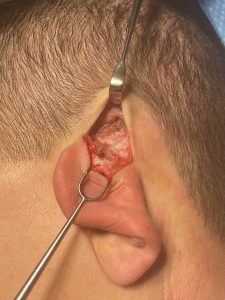
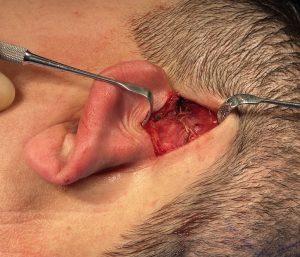

While it is a relatively unknown procedure to patients and surgeons alike, and usually perceived as unable to be done or would adversely affect jaw movement, it is very effective at side of the head reshaping with no yet observed side effects.
Case Highlights:
1) Temporal reduction is a muscle reducing procedure to reshape the side of the head.
2) Release and removal of the muscle over the convex portion of the temporal bone is what accounts for its head narrowing effect.
3) Despite removal of a large surface area of the muscle no functional adverse effects have ever been seen.
Dr. Barry Eppley
Indianapolis, Indiana

